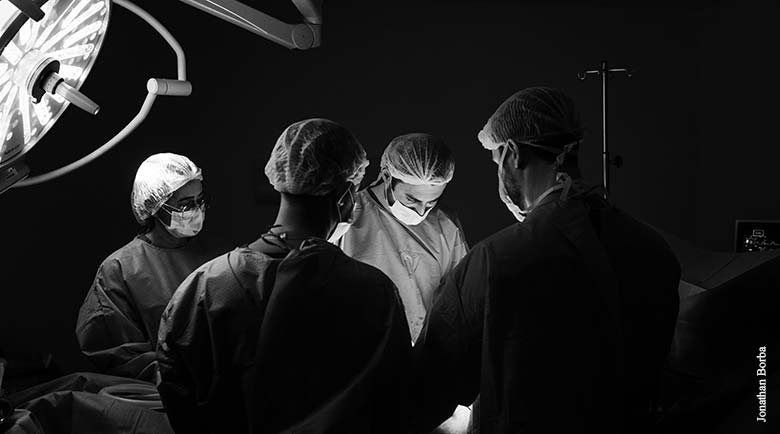Critical shortages in healthcare staffing, CAG reports
Raipur | Correspondent: Chhattisgarh in recent years has been facing challenges in its healthcare sector, as highlighted by the latest Comptroller and Auditor General (CAG) report.
The state falls considerably short of the national average for doctor availability, which is one doctor per 1,456 people.
According to the World Health Organization’s standard, one doctor for every 1,000 population but as per the population of the state (2021-22), one doctor has been catering to 2,492 in Chhattisgarh.
This highlights a significant shortfall in healthcare human resources, with the state facing 34 percent shortage of medical personnel. In numerical terms, Chhattisgarh is lacking 25,793 staff members.
In 23 district health centers, there is a shortage of 33 percent for specialist doctors, 4 percent for medical officers, and 13 percent for paramedics compared to the sanctioned posts. Similarly, in 172 community health centers, there is a 72 percent shortage of specialist doctors and a 15 percent shortage of general doctors against the sanctioned positions.
In Chhattisgarh’s 776 primary health centres, there is a 32 percent shortage of medical officers, a 32 percent shortage of staff nurses, and a 36 percent shortage of paramedics compared to the sanctioned posts.
In 4,996 state health centers, 17 percent of the positions for Auxiliary Nurse Midwives (ANMs) were vacant compared to the sanctioned posts. Additionally, 502 state health centers had no ANMs appointed, which prevented them from providing the necessary maternity services to pregnant women.
The Comptroller and Auditor General (CAG) reported that, out of the 915 sanctioned posts in the cadres of doctors (256), staff nurses (528), and paramedical staff (131), only 694 positions were filled in the state.
This included 190 doctors, 366 staff nurses, and 138 paramedical staff, leading to a 24.15 percent shortage across 23 Maternal and Child Health (MCH) centers. In the remaining seven MCH wings, no posts for doctors, staff nurses, or paramedical staff had been sanctioned.
In the five Government Medical Colleges and Hospitals (GMCs/GMCHs) inspected by the CAG, there was a shortage of specialist doctors ranging from 58 to 30 percent, staff nurses from 64 to 15 percent, and paramedical staff from 55 to 24 percent.
Doctor shortage in Raipur
In the Super Specialty Hospital in Raipur, only 3.21 percent of the sanctioned 280 positions have been filled by regular employees, with just nine positions occupied, including two doctors, five staff nurses, and two paramedical staff. The remaining 208 positions are filled by contract employees.
The CAG report highlighted that the staff nurse-to-bed ratio in ICUs across the state was alarmingly high at 1:20, significantly deviating from the standard norm of 1:1. In non-ICU wards, the ratio was as high as 1:39, compared to the norm of 1:3.
The report noted that the sanctioned number of staff nurses was below the Medical Council of India norms and was not determined based on the bed capacity of the facilities.
The CAG report stated that from 2016 to 2022, four new Government Medical Colleges (GMCs) and one private college were established, increasing the undergraduate intake capacity from 1,100 to 1,370. However, none of the GMCs reached the maximum permissible intake capacity by March 2022.
The report indicated that AYUSH facilities faced a shortage of doctors (29 percent), staff nurses (60 percent), and paramedics (30 percent). Additionally, government Ayurveda colleges experienced a 29 percent shortage in teaching staff.
According to the report, only five out of 23 district hospitals in the state (22 percent) provided all ten specialist services required under the Integrated Public Health System (IPHS) norms. Twelve district hospitals offered nine essential services, missing only dermatology and venereology, while the District Hospital in Kondagaon provided only four specialist services.
Eight-Year delay in launching Cancer OPD in Bastar
The CAG investigation revealed significant gaps in Outpatient Department (OPD) services across Community Health Centers (CHCs). General Medicine OPD services were unavailable in 104 CHCs (60 percent), General Surgery in 148 CHCs (86 percent), Obstetrics and Gynecology in 126 CHCs (73 percent), and Pediatrics in 133 CHCs (77 percent).
Likewise, out of 776 Primary Health Centers (PHCs), 282 centers (36 percent) lacked doctors or medical officers to provide OPD services, falling short of the Integrated Public Health System (IPHS) norms.
The state of Chhattisgarh’s health services is exemplified by the fact that, for the past eight years, the Outpatient Department (OPD) of the Cancer Unit in Jagdalpur and the OPD services for Cardiology, Nephrology, and Neurology in Rajnandgaon have not commenced due to the unavailability of specialist doctors.


